Are you intimidated by motorcycle maintenance? Scared you’ll do something wrong and cause damage to your bike?
While we always recommend asking a professional if you’re unsure, here are some basic motorcycle maintenance tasks which should be done regularly and can easily be completed by a beginner to ensure your motorcycle stays in tip-top running order, whether that’s for motorcycle touring, general riding or track days.
Don’t forget to download your FREE motorcycle maintenance checklist to help you remember everything.
*We work hard to make this the best motorcycle touring & tips website possible. The website is supported by our readers, so if you buy through links on this site we may earn a commission- at no extra cost to you. All opinions remain our own. Ride safe!
Motorcycle Maintenance- the challenge
A Triumph owner with too much time on his hands recently noted that his 1968 Triumph T120 Triumph Bonneville motorcycle consisted of 1890 parts.
Let’s just think about that for a second. If a 50+ year-old motorcycle has almost 2000 parts, how many components are in more modern bikes?!
It’s no wonder that motorcycle maintenance is intimidating, particularly for beginners and those of us who didn’t grow up messing around with bikes or engines.
Heck, I’m not entirely sure I know what all the bits on my motorbike are called, let alone how to maintain them all!
The good news is that you don’t need to name them all, or know how it all works, in order to do basic motorcycle maintenance.
Doing regular Motorcycle Maintenance yourself- the benefits
Regular motorcycle maintenance isn’t just about keeping an engine running smoothly. It’s also about safety. Without regular routine checks, adjustments and replacements, items like tyres, brakes, suspension and chains can fail, causing catastrophic results.
I strongly believe that every motorcycle owner should know a little bit about how to maintain their bike, just like every car owner should.
If nothing else, knowing what to look for before you go out for a ride, whether that’s on the track or a tour around Europe, could help save you from a breakdown, or worse! Getting a handle on how your bike ticks increase your chances of being able to tackle roadside repairs without needing to wait for recovery, especially if you’re going touring with your motorcycle.
But you’ll feel much more confident as a rider once you start to understand your bike a little better.
Even better, it’s a LOT cheaper to maintain your motorcycle yourself as much as you can, rather than pop it into a garage every time it needs anything doing.
Motorcycle Maintenance – ask for help
That being said, I’d like to make something really really clear. It’s ok to ask for help. I wouldn’t know how to do half of this stuff without my husband showing me. There are also some fantastic YouTube channels where you can follow along as they maintain their bikes.
We’ve written this post to help you understand basic motorcycle maintenance tasks which you can do yourself at home or out on the road. But, if you’re in any doubt, ask a mechanic to show you. It’s one of those things that ‘once you know, you know’, but please don’t start messing around with your chain or other parts of your bike without knowing what you’re doing.
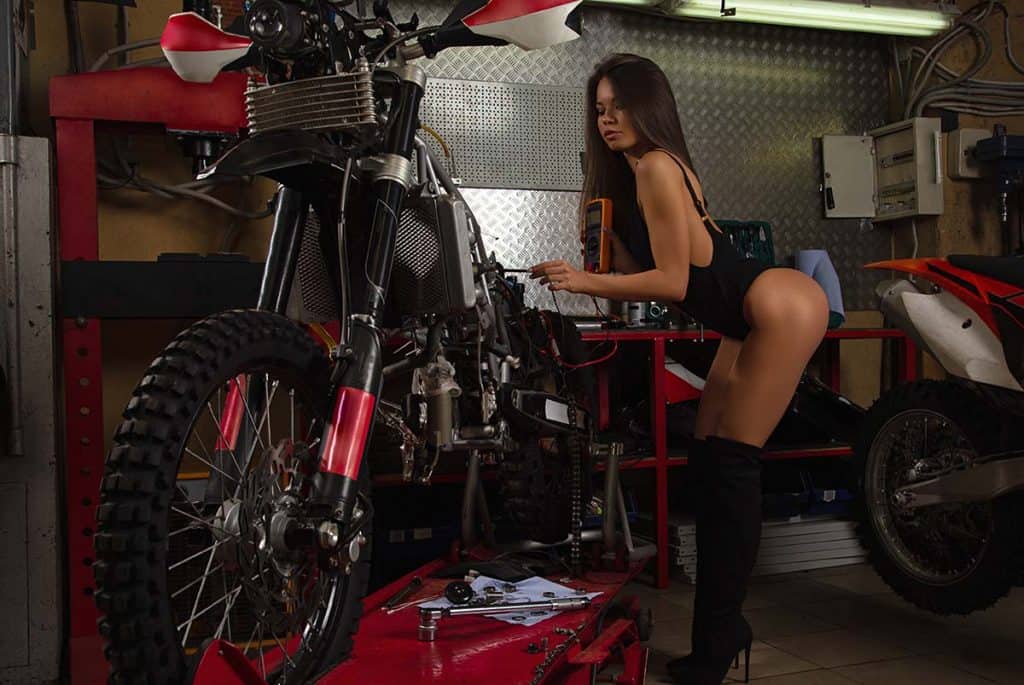
What regular maintenance should be done on a motorcycle?
There are some tasks which need to be done regularly on your motorcycle. Of course, HOW regularly depends a lot on what sort of bike you have, how often you’re using it, and what sort of riding you’re doing.
There’s a world of difference between what my husband does to maintain his classic motorcycles (that he only rides occasionally) and what we do to maintain our Kawasaki ninjas, which we use several times a week, for general riding and track days.
The most important motorcycle maintenance tasks
Still, these are the tasks which ever biker (beginner or not) should learn how to do because they need doing frequently:
- Visual examination/ walk around- know what’s ‘normal’ and what’s not
- Check and fix tyre pressures
- Check tyre tread (ESPECIALLY if you do a lot of track days)
- Clean and check chain
- Check oil level (and know how to top it up)
- Check brake pads
- Check filters
- Check battery
- Clean your motorcycle
Now, there are, of course, other checks which should be done at least yearly, usually as part of a service. We’ll get to those shortly.
Free Motorcycle maintenance checklist
Want a FREE PDF motorcycle maintenance checklist to download and print? Here you go:
How often should basic motorcycle maintenance be done?
As I mentioned above, HOW often you should do the above tasks can vary greatly depending on bike, biker and use.
Some parts of a motorcycle need more maintenance or replacing more often than others. These are mostly things called ‘consumables’:
- Tyres
- Brake Pads
- Fluids which need replacing regularly, like oil
- Filters, especially oil and air filters
- Chain- it might not need replacing, but will need lubing and checking
These five items are all subject to high wear and should be the cornerstone of any maintenance routine checks.
The first place to check should always be your motorcycle manual. Here you should find a motorcycle maintenance schedule, as recommended by the manufacturer. It will either refer to a period of time, regardless of how much you’ve used the bike, or in terms of mileage.
To make things easier, we’ve split the motorcycle maintenance into timed categories. These are once a week inspections, scheduled checks and periodic maintenance. Of course, if you’re using your motorcycle to commute from Edinburgh to London every week or if you’re a motorcycle courier, you’ll probably need to do some of these more frequently.
Recommended Motorcycle maintenance schedule- before every ride/ weekly checks
A walk around before each ride only takes a few minutes but could save your life. Most of the checks are visual and should become second nature while your bike is warming up (it needs at least 30 seconds to get the oil moving after being stationary). You can even do most of them as you put on your helmet and gloves if you’re really in a rush, but don’t skip them.
Here’s what to look for on your walk around. If you find any problems, don’t ride until they’re fixed:
- Look for leaks. There shouldn’t be any. Ever. If you have a puddle on the floor, sniff it to find out whether it’s water, oil or fluid. Look near your fork seals- streaks here suggest they may have failed.
- Check air pressure and inflation of tyres. You can do this using a pressure gauge, but many bikers do it visually or by pressing on the tyre. A gauge is much more accurate
- Check chain tension. See below for more details on how to do that
- Also check the chain is well lubricated. A dry or rusting chain can snap- which will cause you all sorts of problems. It’s best NOT to lube the chain just before you ride. Ideally do it afterwards then leave overnight
- Check lights/ indicators/ glass for any damage caused by stones
- Check clutch and brake lever when sitting on your motorcycle. Give a quick flick to the light switch to check the bulbs are working
- Give your brakes (front and rear) a quick test as you’re riding away.
And that’s it for daily/ weekly checks. The whole thing takes just a few minutes unless you find something which needs attention. Don’t forget to listen to your motorcycle as you’re riding. Any strange noises, clicks, bangs or loss of power need investigating asap.
Motorcycle basic maintenance- monthly checks and tasks
Some of these could fall into the 300-500 mile jobs; it depends how often and how far you ride.
This type of maintenance is all about checking wear rates in more detail. Doing this may mean you will need to adjust the drive chain, top up the oil, brake and coolant levels or replace brake pads, oil and filters. Some basic tools will probably be required.
- Check fluid levels for the brake, clutch, coolant and engine oil via sight windows or dipsticks. Your manual will show you where to find each and how to top them up. Make sure bike is level when you do this (NOTE: You also have steering fluid: we recommend beginners leave this to a garage to check at least once a year.)
- Checking the engine oil level is as straightforward as removing the dipstick or checking the sight glass. A warm engine will give a better indication of oil level- make sure bike is level. Engine oil needs to be replaced roughly every 5000 miles (more if off-roading.)
- Check brake pads for thickness/wear- you can either do this with them in situ or remove the retaining pins to drop the pads out, depending on your type of caliper. Look at the thinnest/ most worn area (which isn’t usually the edge!) Brake pads come in pairs; if one needs replacing, replace both. You might prefer to get a mechanic to do the replacing if needed.
- Inspect chain. You might find this easier if the rear wheel is off the ground, using a paddock stand or main centre stand. Cleaning the chain is a great way to inspect it too. See below for more details.
- Check filters, especially air filter, which can get choked up. You can choose to wash it out or replace it. Engine oil and filters aren’t usually visible unless you want to strip the whole bike down regularly (one of my husband’s favourite hobbies…!) The best way to maintain these without a full engine check is to keep a note of the mileage at the time of the last change and check your oil levels regularly. Oil filters are generally changed when oil is changed.
- Inspect cables; they should be well attached and not coming loose anywhere.
- Check pivot points and moving parts. Do they need greasing? These include kickstand, swinging arms and bearings.
- Check battery- you’ll be pleased to know modern motorcycle batteries are MUCH more reliable than older bikes and don’t require much maintenance. However, check terminals for corrosion, check connections are secure and check levels if it’s been stood for a while.
- Check nuts, bolts and screws: things can work loose surprisingly quickly with the vibrations of a bike over time. Check regularly to ensure nothing needs to be tightened up. This includes handlebars, mirrors, mudguards, luggage racks, wheel nuts, panels and anything else that uses fasteners.
- Do a better check on the tyres. Apart from pressure, look for tread depth and examine the rubber for cracks, nails, dry rot or the rubber breaking down. Most tyres last around 5 years, but a frequently ridden bike will probably need a new set much sooner.

Most important motorcycle maintenance tasks: breakdown
Here’s a little more info on WHY these tasks are so important
Tyre Pressure and Checks
Your tyre pressure can be critical. Tyres which don’t have enough air (under-inflated) can struggle with braking and handling; the low pressure means the tyre wall supported enough to deal with the forces on it. Too much air means the tyre is over-inflated, meaning there will be LESS contact with the road, which affects grip.
If you do track days, you’ll almost always reduce the pressure in your tyres from what you might use on the road. I run 28/30 on track on my ZX6R and 36/42 on the road usually. This is so there is more contact with the track surface (and why it’s so important to heat your tyres properly for a lap or two!)
Be sure to change the pressure back before you head out on the road again. Always check the pressure when the tyres are cold and remember if you are riding with a pillion, you’ll probably need more pressure (check your manual).
TOOLS NEEDED: Use a proper tyre gauge with pump to check and adjust your pressures.
Whilst you’re checking the pressure is also a great time to check tread. Unless you do a lot of track days (which wears out the edges), your tyres should last a while. Still, learn how to find the tread gauge on the tyre and use it to assess how quickly you’re using up the tyre. Riding off-road or on roads with lots of potholes
Brakes and pads
If you do a lot of track days, or just ride really fast, you’ll probably need to check your brake pads frequently.
To do this, look inside your brake calipers at the pads. You can use a ruler or vernier to measure them accurately. If they’re around 2mm at the thinnest part, it’s time to replace them.
I’m just going to state the obvious. These are the things which help you stop. If you’re not sure, PLEASE get someone experienced to help/ show you or ask a mechanic to replace them for you.
You may also want to clean your brakes regularly. To do this, use proper disc brake cleaner NOT regular cleaner (this will affect your brakes working properly).
Motorcycle chain maintenance- Checking tension
A chain which is too loose could slip off the sprockets. A too-tight chain could snap or cause damage and reduce the life of the drivechain.
It’s pretty easy to check the chain tension. Put a toe or toe fingers under the lowest part of the chain and try to lift it. You want around 1-1.5″ movement (check your manual for exact amount)
What’s NOT so easy for beginners is knowing if it’s right or not, and adjusting it.
Your motorcycle manual should have a guide on what your chain should look like at the correct tension. It will also tell you how to adjust the tension and what torque settings you should use (you’ll need a torque wrench to do this properly.)
How often should you lubricate your motorcycle chain?
This is one of the most common questions asked by newbie bikers who have heard horror stories about chain maintenance. You’ll be pleased to know that most modern motorcycles have ‘o’ ring chains, which require much less maintenance than older style ones.
The chain needs cleaning when it is particularly dirty, or at the mileage recommended in your owner’s manual. Do to this, put the rear wheel of your bike on a paddock stand or use the centre stand and put it in neutral gear, which allows the chain to move easily.
Use a specific chain brush to make sure you get all the dirt and gunk off the chain. Then, once clean, rotate the back wheel while applying proper chain lube. You want to evenly coat the chain, and get the lube to penetrate past the O-rings to grease the joint. Once you’ve done an entire rotation, let it sit for at least 5 minutes (ideally overnight), then wipe off the excess with a paper towel or dry rag.
TOOLS NEEDED: Chain Brush, lube
Motorcycle Maintenance – yearly checks
There are plenty of other moving parts on a motorcycle, which should be checked at least once a year. Most of these maintenance jobs will require a skilled mechanic who knows what they’re doing- so we don’t recommend these for beginners, but here are some examples so you know what jobs needs doing:
Engine
- Air filter change: Change your motorcycle’s air filter at about 10,000 miles or every year. If riding regularly in dust or dirt, you may need to replace it more frequently
- Cam chain tensioner: Manual cam chain maintenance should take place during recommended service intervals or once yearly
- Carburettor: Tune and adjust for idle speed every 6 months. Use carburettor cleaner 2-3 times a year.
- Coolant: If your bike has a radiator, checking and replacing the coolant will be a ‘to-do’ on your motorcycle checklist. Change every 25,000 miles or 2 years. Changing the coolant won’t be a problem if you can do an oil change. Have a thorough read of the owner’s manual to locate the drain bolt and header tank.
- Fuel filter: Change this component every year, regardless of whether there are signs of build-up or clogging
- Engine oil and filter: Change at around 3,000 miles for mineral oil and 5,000 miles for synthetic oil
- Injectors: Clean fuel injectors every 50,000 miles
- Valve adjustment: Check out at around 30,000-40,000 miles
Frame
- Bearing grease nipples: Grease once a year
- Steering head bearings: Excluding sealed bearing types, periodically lubricate every 2 years or at 15,000-20,000 miles
- Sub-frame: Carry out a visual inspection once a year
- Swinging arm bearings: Clean and grease every 10,000 miles or annually
Motorcycle parts
- Brakes: Change pads when wearing thin.
- Brake callipers: Check for leaks or piston wear every year or at 8,000 miles
- Brake fluid: Check levels every 3,000-6,000 miles and replace every 2 years
- Brake lines; Some manufacturers recommend replacing rubber brake lines after 4 years. Replace wire braided hoses every 6-10 years
- Drive chain: Inspect, lubricate and adjust every 1,000 miles
- Tyres: Check tyre tread regularly. Change every 5-6 years if not before. If a motorcycle is stationary for 12 weeks or more, its tyres may have dry rot; check for rubber discolouration every 4 weeks
- Wheel bearings and seals: Inspect every year or at 10,000 miles
- Wheels: Inspect and adjust spokes when needed
Suspension
- Fork oil: Change every 2 years or at 15,000 miles
- Fork seals: Change every 2 years or at 15,000 miles
- Rear suspension linkages: Service every 6-12 months or at 8,000 miles
Electrics
- Battery: For lead/acid batteries, check every 4 weeks and every 12 weeks for gel types. Inspect the battery terminals, clamps, cables and screws for corrosion, breakage or loose connections.
- Headlamp light: Examine every year or at 8,000 miles
- Indicators: Examine every year or at 8,000 miles
- Spark plugs: Check every 4,000 – 5,000 miles. Replace at 8,000-10,000 miles.
- Taillight: Examine every year or at 8,000 miles
- Wiring harness: Inspect every year or at 8,000 miles
What happens if you fail to carry out motorcycle maintenance tasks?
In case you’re not convinced, here are some of the things which could fail/ break/ go wrong if you don’t regularly maintain your motorcycle:
- Tyres: All good tyres have tread wear indicators. If they wear below these levels, you will lose grip and the tyre becomes unstable.
- Chain: Chains look tough but they stretch under acceleration. Also, road dirt can cause the rollers to deteriorate over time. Let the chain get too loose and it may jump the sprocket and lock the back wheel. A poorly lubricated chain will also wear out the sprockets a lot faster.
- Brake Pads: If you let your brake pads wear too thin, you are at risk of brake failure. The metal backing plates will also grind on the discs and cause severe damage to your discs.
- Engine Oil: Motorcycle engine oil provides a layer of protection between the fast-moving parts in your motorcycle’s engine. Over time, the oil gets thinner and full of contaminates. When this happens, the engine overheats, loses power and may eventually cause engine failure.
- Oil Filter: The multiple layers of the oil filter strain metallic debris and contaminants from the oil. When the filter clogs, engine oil deteriorates rapidly.
- Fuel Filter: Forget to clean your fuel filter periodically and debris and dirt from inside the tank will, over time, prevent fuel flow.
- Air Filter: Allow your air filter to get clogged with dust and dirt and it will affect the flow of air into the combustion chamber. When this happens it can result in rough tick over and power loss.
It’s a similar story for every part of the motorcycle where one component is in contact with another, whether fork seals or wheel bearings. This contact causes friction, which results in wear or heat and heat leads to expansion. Whatever the cause of friction, the result is the same; leave it too long and the part will fail.

Basic Motorcycle maintenance tips
Here are some tips for beginners to motorcycle maintenance, from bikers who do most of it themselves:
Build your tool kit for you and YOUR bike: It may be tempting to buy a multi-item, ready-made tool kit. However, these often include items that you don’t need. Tool kits are personal items. Start with the basics and slowly build up the kit as you discover new tools to make maintenance jobs easier.
It’s well worth investing in a proper toolbox with sections which ensure tools are separated and easy to find when you need them.
Budget tools are usually ok: Good quality spanners and socket sets are inexpensive, so don’t think you need to break the bank with big-name brands. A quick browse through an owner’s blog for your specific motorcycle should reveal a thread where members share their thoughts on the best budget tools.
A clean workspace is a safe workspace: Some consumables are flammable, so keep them safely stored. Don’t leave tools or open containers on the floor. A kicked-over motorcycle oil or brake fluid container is a potential accident.
Make sure you can account for all your spanners, sockets and screwdrivers at the end of a job; doing this will help you avoid leaving anything behind a body panel or under the tank!
Diagnosing motorcycle breakdowns
If you ride often enough and far enough, at some point you’ll likely find yourself stuck on the side of the road (if you’re motorcycling in France, be sure you have your hi-vis jacket on!)
It can be completely intimidating when your bike isn’t working properly, especially if you’re touring solo, so here’s a quick diagnostic check for you.
Generally speaking, a motorcycle requires these things to run:
- air
- fuel
- spark
- compression
If your bike suddenly stops working, here are some simple things to check to try to figure out the problem.
- Do you have fuel in the tank?
- For air, is your filter clogged? Airbox flooded?
- Are your spark plugs in good condition?
- Is the battery ok and connected?
If your bike won’t start at all, check the following:
- kill switch on (we’ve all done it!)
- battery connected?
- spark plugs sparking?
- Don’t try and twist throttle while starting- you’ll flood the engine. Give your bike at least 30 seconds to warm up before revving.
- Too little fuel is just as bad as too much- check you have fuel in tank
What maintenance tools do you need in your garage?
Motorcycle manufacturers once supplied a basic under the seat toolkit. These tools were enough to carry out basic maintenance (for BMW owners, this kit even featured a hand cleaner and BMW embossed cloth!)
Today, tool kits are often optional extras on new bikes and many second-hand bikes have lost their kits long ago.
The good news is that quality tools can be affordable. However, DON’T rush out and buy all these. Buy each one as a job comes up, so you’re not wasting money on something you’ll never use. If something sounds too complicated and you’d rather a mechanic did it, that’s ok.
A toolkit for basic and more advanced motorcycle maintenance could include:
- Spanners
Most modern motorcycles use metric nuts and bolts (do check first), so a set of metric spanners covering 6-30mm should be enough for most jobs. Also, add any oversize spanners you may need to your kit, like an axle nut spanner or bleed spanner for the brakes.
It’s also a sensible idea to invest in a torque wrench. You will need this if you have nuts, bolts or fasteners that require tightening to specific torque values.
- Socket Set
A socket set should cover the same size range as your spanners, not forgetting any over or under-size sockets for specific jobs. Don’t overlook a long-reach spark plug socket, either if you’re considering changing your own spark plugs (not a task I’d recommend for beginners)
- Screwdrivers
It’s easier to buy screwdrivers as a set rather than individually. Make sure your set includes small, medium, large crosshead (Philips) and flathead screwdrivers and Torx and hex heads. You can also get these as a set of bits to fit onto a ratchet screwdriver. A set of allan keys is a good idea too.
- Pliers
Apart from standard or combination pliers, you should also include long nose and circlip pliers and some long nose and wide mouth adjustable grips
- Measuring Devices
If you need to measure the thickness of the brake pads, a micrometre or vernier calliper will give you a very accurate reading. If that’s a little over the top to check your brake pads, you can also do the same job using a 12-inch steel ruler (make sure it has imperial and metric scales.)
This category also includes a multimeter to test electrical connections and wiring. You can also check your motorcycle battery’s health using one.
- Measuring Containers
Replacing the oil in your forks is usually an amount measured in millilitres. A measuring jug is essential for this job, as the precise amount needs to go into both fork legs. Measuring jugs often have a dual scale in ml (millilitres) and cc (centilitres).
A plastic jug & small funnel are also a great help when topping engine oil in tricky-to-reach fillers. You can also use it when bleeding the brakes.
- Fluid Catchment Pan
While you can use household pans or roasting tins to collect old oil or coolant (can you hear housewives sighing across the nation!), a specific plastic fluid pan is inexpensive and likely to promote marital bliss. It also doubles as a sealable container to transport old oil to the recycling centre for safe disposal.
- Clean Rags
A bundle of clean rags is helpful for a multitude of reasons. The list is endless, whether cleaning grime away from oil-level windows or protecting the paintwork from brake fluid.
- Chemicals, Fluids and Consumables
Keeping some engine oil and brake fluid in your workspace for topping up is a good idea. You should also include chain lube, brake cleaner, degreaser, penetrating oil, such as 3in1, WD40, hand cleanser and bike cleaner.
Nitrile gloves are also a smart move when carrying out any motorcycle maintenance. These gloves can protect you from grazed knuckles and prevent dirt and oil from getting into cuts and scrapes.
- Inspection Light
An inspection light is yet another item that is easy to overlook. It is worth its weight in gold if you are trying to locate tucked-away drain plugs or components under petrol tanks or behind body panels.
Inspection lights come in many different shapes and sizes, including ones with magnetic bases or clamps. A small head mount torch will leave both hands free and can also pull double duty as part of your essential roadside toolkit.
Cordless lights mean you won’t be tripping over wires. Also, opt for an LED light with rechargeable batteries.
- Paddock Stand
Not all motorcycles have a main centre stand. So if you need to get the front or rear wheel off the floor, you will need a paddock stand.
Several different types are available. These either fit onto bobbins attached to the swinging arm or have universal lifting arms that secure under most double-sided swinging arms.
Most paddock stands come in pairs, with a front and rear stand. Specialist stands for single-sided swinging arms are available and you can also get front-only stands that locate under the steering head.
- Wheelie Stool
Last but not least is the workshop wheelie stool (nope, it has nothing to do with pulling wheelies sadly.) This item isn’t an essential kit but it does save a lot of wear and tear on your knees. Not everyone is lucky enough to have a garage or workspace. So if you carry out basic motorcycle maintenance outdoors, invest in kneepads.
Useful motorcycle maintenance books
Here are some really useful motorcycle maintenance books you might find helpful:
You might find these motorcycle maintenance logbooks useful too:
These are a great way to keep track of what has/ hasn’t been done on your motorbike, so you can refer back to it if needed.
Final thoughts on DIY motorcycle maintenance
You may now be questioning whether home motorcycle maintenance is worth the hassle. Not everyone is born with a spanner in their hand and I totally appreciate that this post can be daunting. However, it’s always a good idea to read your manual and start understanding a little about what your bike needs in terms of regular maintenance.
Sadly, it’s not enough to just read the manual (trust me, I tried). It’s important to actually sit down with your motorbike and follow some of the instructions in practical terms.
If you learn and do a little each week or month, you’ll be amazed at how quickly your knowledge grows. You’ll also feel ridiculously proud the first time you do something which involves making your bike better and safer, especially if it involves tools.
Following a routine maintenance schedule and using a motorcycle maintenance checklist will also help you feel more confident, as well as saving you plenty of money over time, which has to be a win-win for any biker. Still, don’t forget that even with regular checks, you will still need a full service (by someone who knows what they’re doing!) around every 5000 miles or six months (check your manual for exact time.
Ride safe x

Kat has spent years touring the UK and Europe by motorcycle, car and motorhome. It was the idea of motorcycle touring which pushed her to go from nervous new biker to excited explorer and she still can’t believe some of the crazy mountain roads she’s ridden!
She has owned several bikes, with her favourites being a Triumph Scrambler for long rides and her current speed demon- a ZX6R (both purple!) Whilst she loves to travel, her favourite thing is to help other bikers (both male and female) gain the confidence to have their own epic adventures. Ride safe!
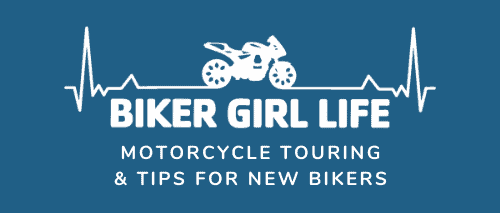
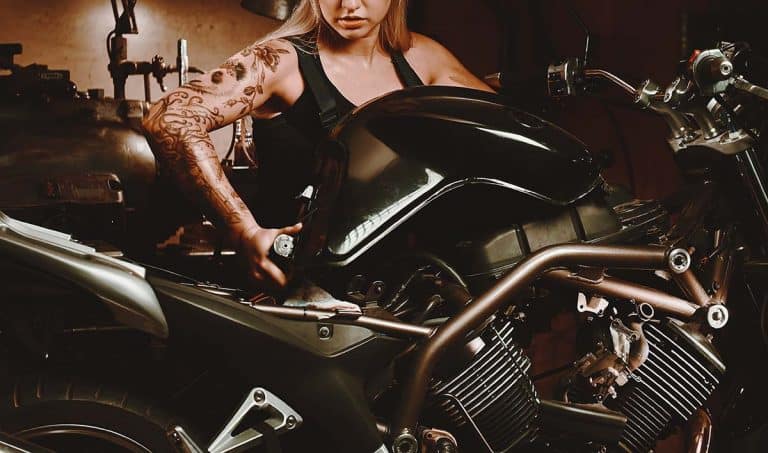
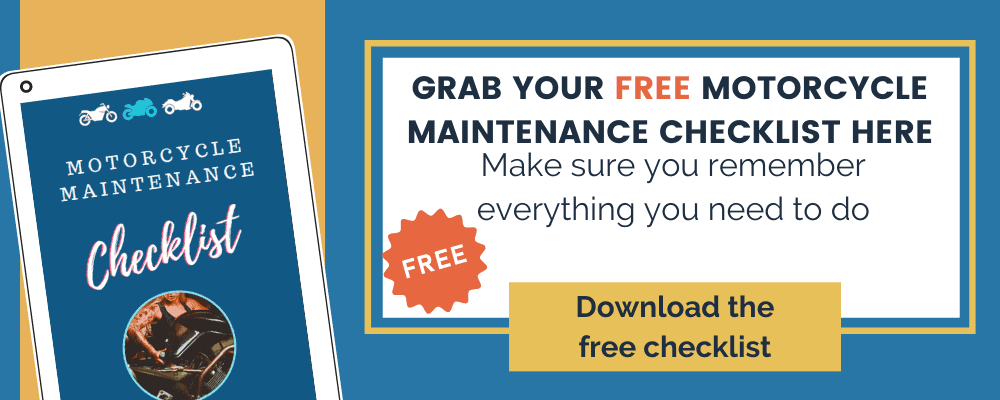






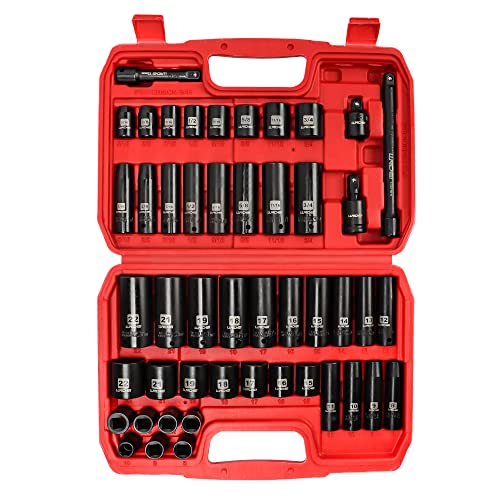






















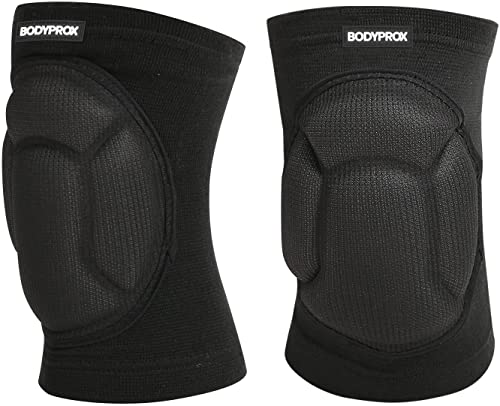

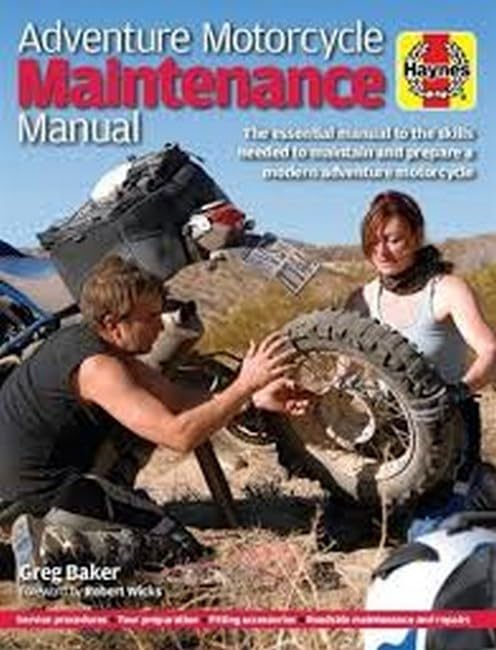



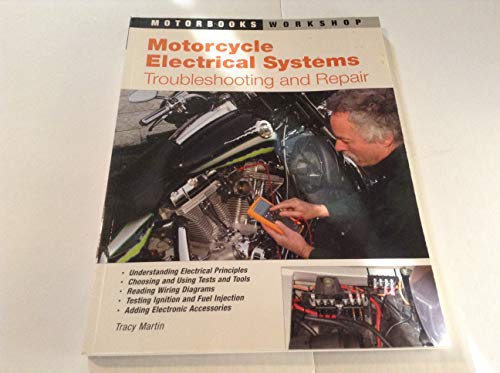
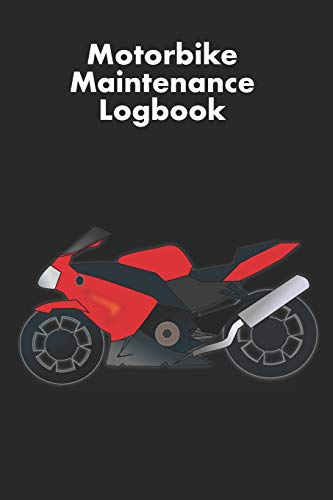
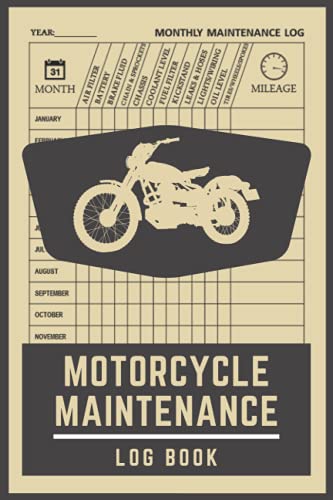
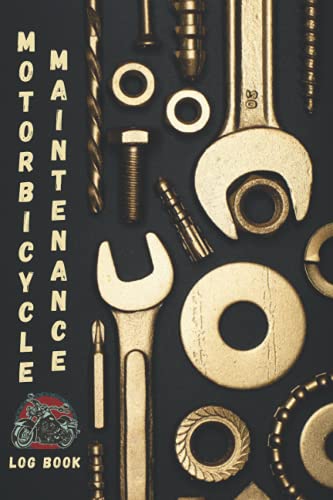
Alright, so my boyfriend’s bike has been collecting dust in the garage due to its numerous oddities and squeaks, similar to those of an old, rusty door. It’s like pulling teeth to get him to take it to a conventional bike shop, but a mobile bike repair service? To save that abandoned two-wheeler, we need that hero. Perhaps I should explain to him that maintaining a motorcycle’s engine properly isn’t the only thing that goes along with it; safety is another factor.
Must read blog for every women bike riders.
Informative blog.
Excellent maintenance guide girl riders.
Every girl rider must go through this blog.
A clean air filter is crucial for optimal bike performance, and this article makes it simple for riders to maintain their two-wheeled companions efficiently.
bike’s battery is checked regularly can save a lot of hassle on rides.
A quick reminder to fellow riders: don’t forget to check your bike’s headlights. Safety first
Checking the chin of the bike is often overlooked, but it’s a crucial part of ensuring overall bike health
Your blog is a go-to for insightful content! The engaging writing style and the information about the motorcycle maintenance is too useful keep me coming back for more. Well done!
Your articles are both insightful and engaging! I love your topic. Keep up the fantastic work